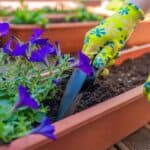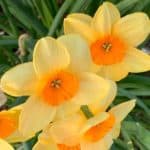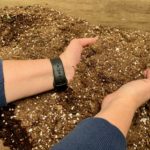What’s perhaps the #1 question I get each spring? “When should I apply crabgrass preventer to my lawn?” This one is quickly followed by “How ‘bout weed & feed?” You don’t have to follow calendars or complicated formulas – just look to the plants!
As an Amazon Associate I earn from qualifying purchases.
For pre-emergent (a.k.a. crabgrass preventer), the time is early-spring, but not too early. Conditions need to be just right, usually this means late March or early April in my USDA Zone 5 garden. How do I know for sure? The pussy willows and the forsythias tell me. Huh you say? That’s right. When the pussy willow buds begin to open and the forsythias start to bloom, the conditions are perfect. Too soon and the product will breakdown. Too late and the crabgrass is already having a party in your yard. Apply crabgrass preventer right before a rain if possible. The rain (or watering) activates a pre-emergent. Applying between rains is ok too, but the extra moisture will likely gunk up your spreader.

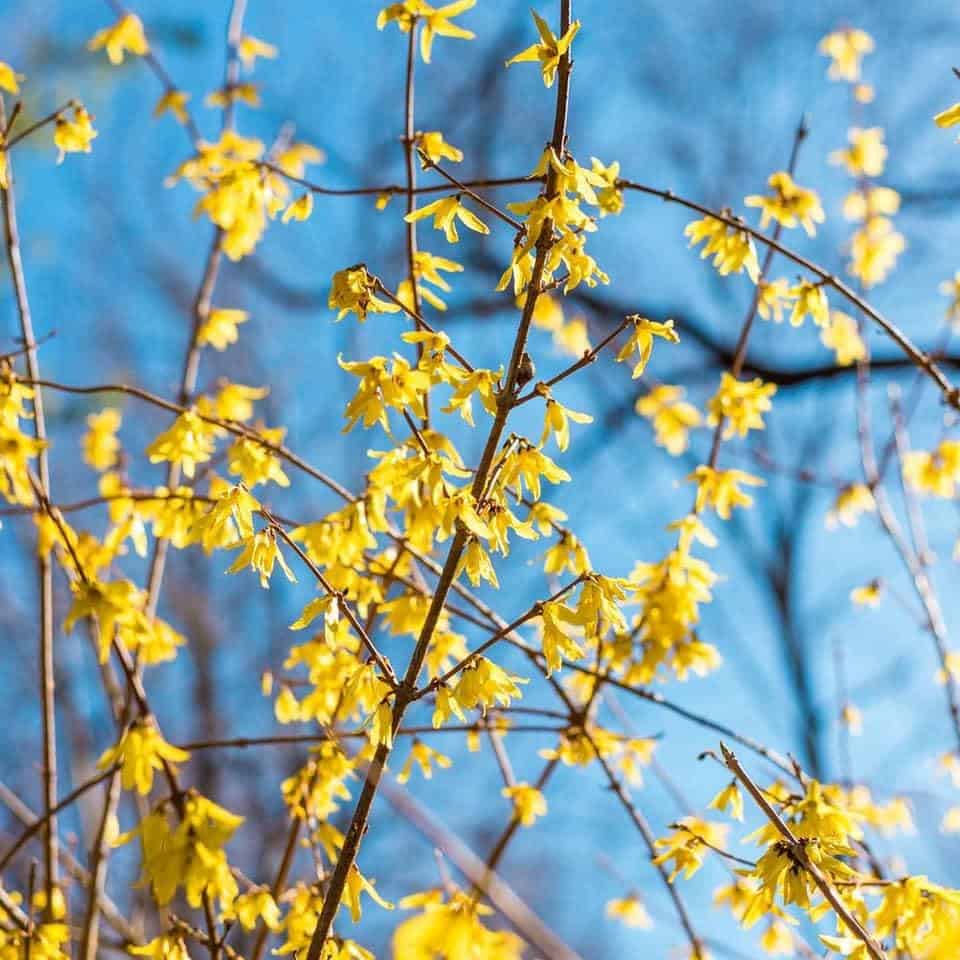
What about weed & feed? Can a plant tell me when to apply weed & feed too? Yes! When the redbud trees bloom, it’s time to find a stretch of dry weather for 3 or 4 days. Apply weed & feed to damp grass after a rain or early in the morning on dewy grass. Unlike crabgrass preventer, this product needs several days stuck on those weeds to kill them off. The timing for the redbud trees to kick into high gear, and give you your cue, will generally be around early May.
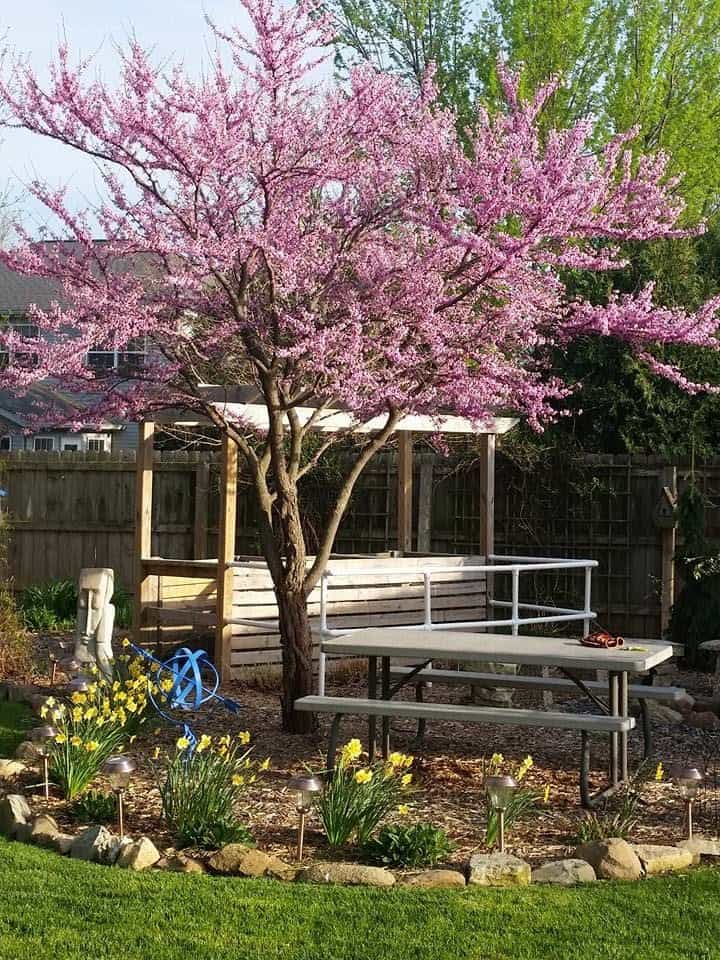
What about fall? I like to use a fall fertilizer that also includes a weed killer to ensure that I’ve eliminated perennial weeds like dandelion before they go dormant for the season. If your lawn is in rough shape, a fall application is especially important to prep your grass for its winter sleep and give it the best possible start come spring.
To sum up, here’s my easy seasonal series, all applied with a good quality rotary spreader:
- Early-spring – crabgrass preventer with lawn food
- Late-spring – weed & feed
- Summer – 2nd application of weed & feed if needed
- Fall – a specialized fall lawn fertilizer
Adjust your spreader settings and follow the instructions on the bag. Avoid use around kids and pets. If exposed, wash immediately and thoroughly. Also the stuff will seriously stain your floors and carpets so keep that in mind too.
Now this is all a personal choice. Some favor no products and let the weeds flourish. That’s ok too. Your yard, your choice. If you do treat your yard, it is SO easy to do it yourself and save a ton of money over a lawn service, but that’s a choice too.
You do you, but if there’s one thing I will get on my soapbox about is to say NO to insecticides of any kind, ALWAYS. I don’t care what it is – if it is an insecticide, talks about being a systemic or mentions killing or controlling any kind of bug, it can and will kill our bees, butterflies and all of our pollinator friends so critical to our world. Say NO to insecticides. I have for years and my gardens and lawn have never been better.
I hope this helps you with the mysteries of lawn care. What’s that I hear? Is it woo hoos being shouted across our yards and gardens as we venture out again and soak up the sun? Woo hoo indeed! Have fun out there and don’t forget to listen to the plants! Talk to them too of course…I won’t tell!
SHARE IT ON PINTEREST
